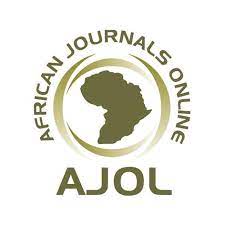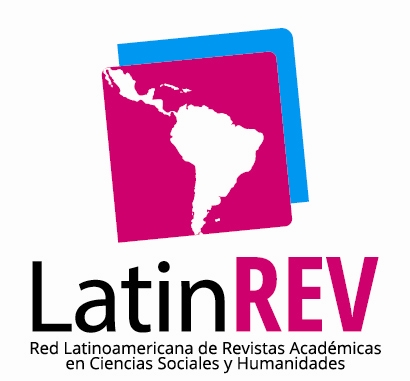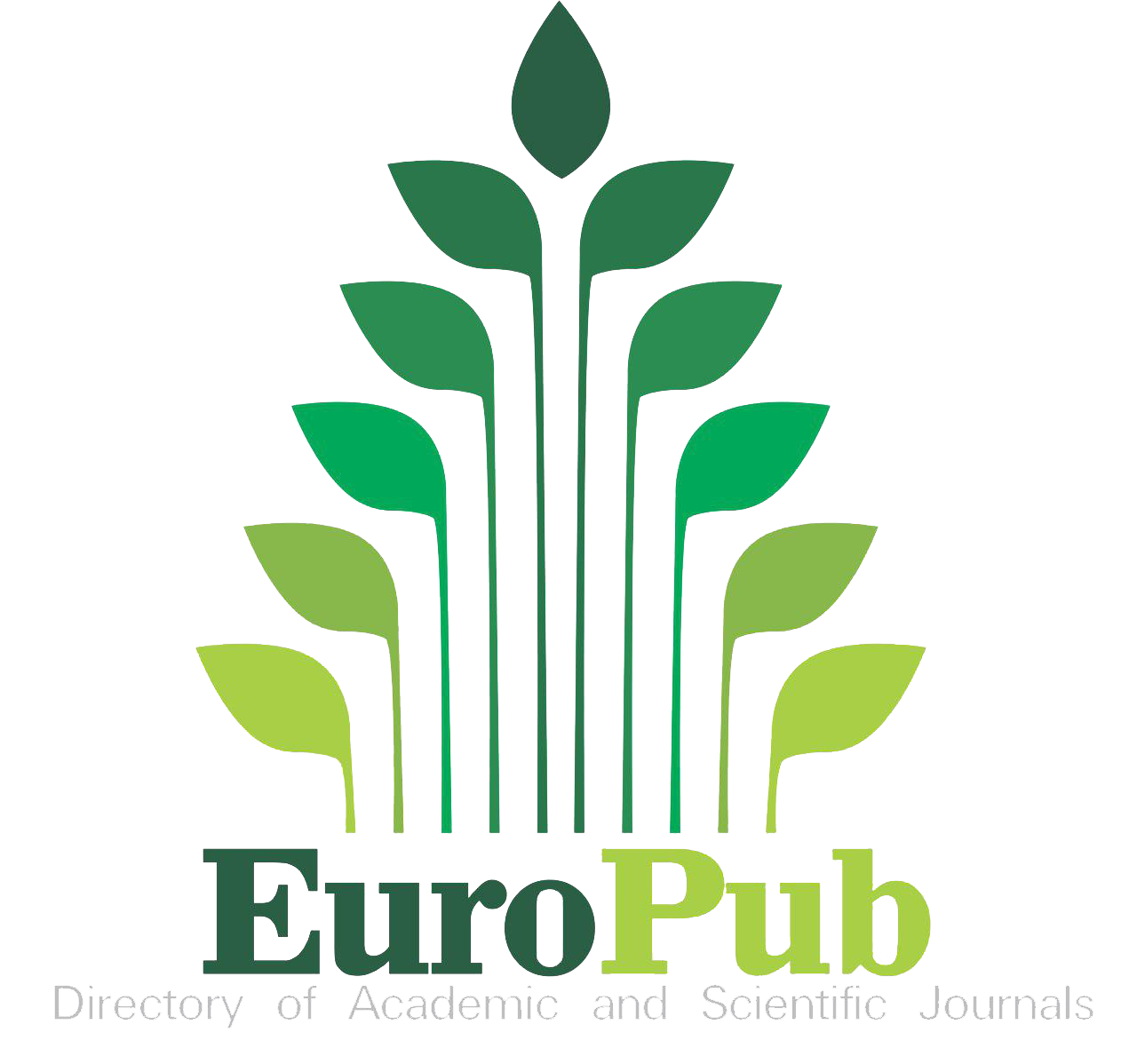Mudanças no estilo de vida de isolados selvagens e veterinários de Pseudomonas aeruginosa expostos a três antibióticos de uso veterinário
DOI:
https://doi.org/10.54580/R0701.08Resumo
Este estudo teve como objetivo avaliar a atividade planctônica e séssil de isolados silvestres e veterinários de Pseudomonas aeruginosa expostos por 4 h à formulações veterinárias compostas de florfenicol (FLO) e sulfametoxazol+trimetoprima (SXT), sob diferentes níveis de Demanda Química de Oxigênio (DQO). Foram realizados testes adicionais para produção de piocianina, antibiograma e hidrofobicidade da parede celular. Todos os isolados produziram até 3,26 µg/L de piocianina e apresentaram parede celular fortemente hidrofóbica. Tanto o DQO de 20.000 mg/L como a presença de FLO favoreceram a inibição da adesão celular em até ≈45%, e nenhum efeito antibiofilme foi encontrado. FLO/SXT nas concentrações 0,30/0,24 mg/mL exibiram as maiores atividades. Foi observado um aumento de até ≈16% na presença de FLO e percentuais menores na presença de SXT. Houve um aumento significativo nas células planctônicas em até ≈32%. Dois fatores podem ter sido responsáveis por isso: descolamento ativo no biofilme e duplicação de células tolerantes, pois as velocidades de natação e corrida foram reduzidas, mas as células permaneceram viáveis (SXT > FLO). Os resultados do antibiograma indicaram que os isolados veterinários de P. aeruginosa foram mais sensíveis aos antibióticos do que os isolados selvagens, porém, no teste in vitro de formação de biofilme os isolados selvagens foram mais suscetíveis a alterações do que os isolados veterinários. No meio com maior teor de matéria orgânica, entretanto, a passagem do estado séssil para o planctônico parece ter servido como estratégia de sobrevivência para P. aeruginosa em concentrações subinibitórias de FLO e SXT.
Downloads
Referências
Abdelaziz, A. A., Kramer, A. M. A., Al-Madboly, L. A., & Al-Madboly, L. A. (2023). Pseudomonas aeruginosa’s greenish-blue pigment pyocyanin: its production and biological activities. Microbial Cell Factories, 22(1), 110. https://doi.org/10.1186/s12934-023-02122-1
APHA, AWWA, & WEF (Ed.) (2012). Standard methods for the examination of water and wastewater (22nd ed.) Baltimore: APHA, AWWA, WEF.
Ardakani, Z., Canali, M., Aragrande, M., Tomassone, L., Simoes, M., Balzani, & Beber, C. L. (2023). Evaluating the contribution of antimicrobial use in farmed animals to global antimicrobial resistance in humans. One Health, 17, 100647. https://doi.org/10.1016/j.onehlt.2023100647
Awad, Y. M., Kim, S-C., El-Azeem, S. A. M. A., Kim, H-K., Kim, K-R., Kim, K., Jeon C., Lee, S.S., & Ok, Y. S. (2014). Veterinary antibiotics contamination in water, sediment, and soil near a swine manure composting facility. Environmental Earth Sciences, 71, 1433–1440. https://doi.org/10.1007/s12665-013-2548-z
Balaban, N. Q., Merrin, J., Chait, R., Kowalik, L, & Leibler, A. (2004). Bacterial persistence as a phenotypic switch. Science 305(5690), 1622-1625. https://doi.org/10.1126/science.1099390
Batista, A. H. M., Moreira, A. C. D., Carvalho, R. M., Sales, G. W. P., Nogueira, P. C. N., Grangeiro, T. B., Medeiros, S. C., Silveira, E. R., & Nogueira, N. A. P. (2017). Antimicrobial effects of violacein against planktonic cells and biofilms of Staphylococcus aureus. Molecules, 22(10), 1534. https://doi.org/10.3390/molecules22101534
Berman, T. S., Barnett-Itzhaki, Z., Berman, T., & Marom. E. (2023). Antimicrobial resistance in food-producing animals: towards implementing a one health based national action plan in Israel. Israel Journal of Health Policy Research, 12, 18. https://doi.org/10.1186/s13584-.23.562-z
Bojarski, B., Kot, B., & Witeska, M. (2020). Antibacterials in aquatic environment and their toxicity to fish. Pharmaceuticals, 13(8), 189. https://doi.org/10.3390/ph13080189
Boxall, A. B. A., Koplin, D. W., Halling-Sørensen, B., & Tolls, J. (2003). Are veterinary medicines causing environmental risks? Environmental Science & Technology, 37(15), 287-294. https://doi.org/10.1021/es032519b
Boyd, C. D., & O'Toole, G. A. (2012). Second messenger regulation of biofilm formation: breakthroughs in understanding c-di-GMP effector systems. Annual Review of Cell and Developmental Biology, 28, 439-462. https://doi.org/10.1146/annurev-cellbio-101011-155705
Breidenstein, E. B. M., de La Fuente-Núñez, C., & Hancock, R. E. W. (2011). Pseudomonas aeruginosa: all roads lead to resistance. Trends in Microbiology, 19(8), 419-426. https://doi.org/10.1016/j.tim.2011.04.005
Cabello, F. C., Godfrey, H. P., Tomova, A., Ivanova, L., Dӧlz, H., Millanao, A., & Bushmann, A.H. (2013). Antimicrobial use in aquaculture re-examined: Its relevance to antimicrobial resistance and to animal and human health. Environmental Microbiology, 15, 1917-1942. https://doi.org/10.1111/1462-2920.12134
Canton, L., Lanusse, C., & Moreno, L. (2021). Rational pharmacotherapy in infectious diseases: Issues related to drug residues in edible animal tissues. Animals, 11(10), 2878. https://doi.org/10.3390/ani11102878
Charlton, T. S. (2008). A repeatable biofilm removal assay and its application in the assessment of commercial cleaning formulations for medical devices. Healthcare Infection, 13(4), 131-135. https://doi.org/10.1071/HI08030
Cheng, J., Jiang, L., Sun, T., Tang, T., Du, Z., Lee, L., & Zhao, Q. (2019). Occurrence, seasonal variation and risk assessment of antibiotics in the surface water of North China. Archives of Environmental Contamination and Toxicology, 77, 88–97. https://doi.org/10.1007/s00244-019-00605-0
Colling, L. B., Silva, J. P. M., Delgado, G. B., Vasconcellos, F. A., Félix, S. R., Duval, E. H., Conceição, R. C., & Silva, E. F. (2020). Evaluation of the biofilm formation by strains of Salmonella spp. isolated from fresh sausage. Brazilian Journal of Development, 6(8), 54428-54435. https://doi.org/10.34117/bjdv6n8-019
Cui, C., Han, Q., Jiang, L., Ma, L., Jin, L., Zhang, D., Lin, K., & Zhang, T. (2018). Occurrence, distribution, and seasonal variation of antibiotics in an artificial water source reservoir in the Yangtze River delta, East China. Environmental Science and Pollution Research International, 25, 19393–19402. https://doi.org/10.1007/s11356-018-2124-x
Dale, J. L., Nilson, J. L., Barnes, A. M. T., & Dunny, G. M. (2017). Restructuring of Enterococcus faecalis biofilm architecture in response to antibiotic-induced stress. NPJ Biofilms Microbiomes, 3, 15. https://doi.org/10.1038/s41522-017-0023-4
Devnath, P., Uddin, M. K., Ahmed, F., Hossain, M. T., & Manchur, M. A. (2017). Extraction, purification and characterization of pyocyanin produced by Pseudomonas aeruginosa and evaluation for its antimicrobial activity. International Research Journal of Biological Sciences, 6(5), 1-7.
El-Fouly, M. Z., Sharaf, A. M., Shahin, A. A. M., El-Bialy, H. A., & Omara, A. M. A. (2015). Biosynthesis of pyocyanin pigment by Pseudomonas aeruginosa. Journal of Radiation Research and Applied Sciences, 8(1), 36-45. https://doi.org/10.1016/j.jrras.2014.10.007
Eliasi, U. L., Sebola, D., Oguttu, J. W., & Qekwana, D. N. (2020). Antimicrobial resistance patterns of Pseudomonas aeruginosa isolated from canine clinical cases at a veterinary academic hospital in South Africa. Journal of South African Veterinary Association, 91, 2052. https://doi.org/10.4102/jsava.v91i0.2052
Gazal, L. E. S., Brito, K. C. T., Kobayashi, R. K. T., Nakazato, G., Cavalli, L. C., Outtumi, L. K., & Brito, B. G. (2020). Antimicrobials and resistant bacteria in global fish farming and the possible risk for public health. Animal Pathology, 87, 1-11. https://doi.org/101590/1808-165700362019
Gonçalves, T., & Vasconcelos, U. (2021). Colour me blue: the history and the biotechnological potential of pyocyanin. Molecules, 26(4), 927. https://doi.org/10.3390/molecules26040927
Guo, Y-S., Furrer, J. M., Kadilak, A. L., Hinestroza, H. F., Gage, D. J., Cho, Y. K., & Shor, L. M. (2018). Bacterial extracellular polymeric substances amplify water content variability at the pore scale. Frontiers in Environmental Science, 6, 93. https://doi.org/10.3389/fenvs.2018.00093
Hajjartabar, M. (2004). Poor-quality water in swimming pools associated with a substantial risk of otitis externa due to Pseudomonas aeruginosa. Water Science and Technology, 50(1), 63-67.
He, S., Dong, D., Zhang, X., Sun, C., Wang, C., Hua, X., Zhang, L., & Guo, Z. (2018). Occurrence and ecological risk assessment of 22 emerging contaminants in the Jilin Songhua River (Northeast China). Environmental Science and Pollution Research International, 25, 24003-24012. https://doi.org/10.1007/s11356-018-2459-3
Heberer, T. (2002). Occurrence, fate, and removal of pharmaceutical residues in the aquatic environment: A review of recent research data. Toxicology Letters, 131(1-2), 5–17. https://doi.org/10.1016/S0378-4274(02)00041-3
Holmstrӧm, K., Grӓslund, S., Wahlstrӧm, A., Poungshompoo, S., Bengtsson, B-E., & Kautsky, N. (2023). Antibiotic use in shrimp farming and implications for environmental impacts and human health. International Journal of Food Science and Technology, 38(3), 255-266. https://doi.org/10.1046/j.1365-2621.2003.00671.x
Jurado-Martín, I., Sainz-Mejías, M., & McClean, S. (2021). Pseudomonas aeruginosa: An audacious pathogen with an adaptable arsenal of virulence factors. International Journal of Molecular Sciences, 22(6), 3128. https://doi.org/10.3390/ijms22063128
Kim, J., & Ahn, J. (2022). Emergence and spread of antibiotic-resistant foodborne pathogens from farm to table. Food Science and Biotechnology, 31(12), 1481-1499. https://doi.org/10.1007/s10068-022-01157-1
Luo, J., Dong, B., Wang, K., Cai, S., Kiu, T., Cheng, X., Lei, D., Chen, Y., Li, Y., Kong, J., & Chen, Y. (2017). Baicalin inhibits biofilm formation, attenuates the quorum sensing-controlled virulence and enhances Pseudomonas aeruginosa clearance in a mouse peritoneal implant infection model. PloS One, 12(4), e0176883. https://doi.org/10.1371/journal.pone.0176883
Mancuso, G., Midiri A., Gerace E., & Biondo C. (2021). Bacterial antibiotic resistance: The most critical pathogens. Pathogens, 10(10), 1310. https://doi.org/10.3390/pathogens10101310
Mangalappalli-Illathu, A. K., Vidovic, S., & Korber, D. R. (2008). Differential adaptive response and survival of Salmonella enterica serovar enteritidis planktonic and biofilm cells exposed to benzalkonium chloride. Antimicrobial Agents and Chemotherapy, 52(10), 3669-3680. https://doi.org/10.1128/AAC.00073-08
Masters, P. A., O’Bryan, T. A., Zurlo, J., Miller, D. Q., & Joshi, N. (2003). Trimethoprim-sulfametoxazole revisted. The Archives of Internal Medicine, 163(4), 402-410. https://doi.org/10.1001/archinte.163.4.402
Mathenge, S. G., Wanjua, R. N., & Kenji, G. M. (2017). Trimethoprim and sulfamethoxazole residues in untreated wastewater used for irrigation in per-urban farms in Nairobi County, Kenya. Nature Environment and Pollution Technology, 16(4), 989-994.
Matz, C., & Jürgens, K. (2005). High motility reduces grazing mortality of planktonic bacteria. Applied Environmental Microbiology, 71(2), 921-929. https://doi.org/10.1128/AEM.71.2.921-929.2005
Min, J., Kim, P., Yun, S., Hong, M., & Park, W. (2023). Zoo animal manure as an overlooked reservoir of antibiotic resistance genes and multidrug-resistant bacteria. Environmental Science and Pollution Research International, 30(1), 710-726. https://doi.org/10.1007/s11356-022-22279-3
Muaz, K., Riaz, M., Akhtar, S., Park, S., & Ismail, A. (2018). Antibiotic residues in chicken meat: global prevalence, threats, and decontamination strategies: a review. Journal of Food Protection, 81(4), 619-627. https://doi.org/10.4315/0362-028X.JFP-17-086
Nowroozi, J., Sepahi, A. A., & Rashnonejad, A. (2012). Pyocyanine biosynthetic genes in clinical and environmental isolates of Pseudomonas aeruginosa and detection of pyocyanine’s antimicrobial effects with or without colloidal silver nanoparticles. Cell Journal, 14(1), 7-18.
Oliveira, A. D. L., Vasconcelos, U., & Calazans, G. M. T. (2021). Detection of potential pathogenic Pseudomonas aeruginosa in a hospital water system. Research Journal of Pharmacology, Biology and Chemical Sciences, 12(4), 132-139. https://doi.org/10.33887/rjpbcs/2021.12.4.18
Oliveira-Tintino, C. D. M., Muniz, D. F., Barbosa, C. R. S., Pereira, R. L. S., Begnini, I. M., Rebelo, R. A., Silva, L. E., Mireski, S. L., Nasato, M. C., Krautler, M. I. L., Pereira, P. S., Costa, J. G. M., Rodrigues, F. F. G., Teixeira, A. M. R., Ribeiro-Filho, J., Tiintino, S. R., Menezes, I. R. A., Coutinho, H. D. M., & Silva, T. G. (2021). The 1,8-naphthyridines sulfonamides are NorA efflux pump inhibitors. Journal of Global Antimicrobial Resistance, 24, 233-240. https://doi.org/10.1016/j.jgar.2020.11.027
Pang, Z., Raudonis, R., Glick, B. R., Lin, T-J., & Cheng, Z. (2019). Antibiotic resistance in Pseudomonas aeruginosa: mechanisms and alternative therapeutic strategies. Biotechnology Advances, 37(1), 177-192. https://doi.org/10.1016/j.biotechadv.2018.11.013
Penesyan, A., Paulsen, I. T., Gillings, M. R., Kjelleberg, S., & Manefield, M. J. (2020). Secondary effects of antibiotics on microbial biofilms. Frontiers in Microbiology, 11, 2109. https://doi.org/10.3389/fmicrob.2020.02109
Petrova, O. E., & Sauer, K. (2016). Escaping the biofilm in more than one way: Desorption, detachment or dispersion. Current Opinion in Microbiology, 30, 67-78. https://doi.org/10.1016/j.mib.2016.01.004
Qiao, M., Ying, G-G., Singer, A. C., & Zhu, Y-G. (2018). Review of antibiotic resistance in China and its environment. Environment International, 110, 160-172. https://doi.org/10.1016/j.envint.2017.10.016
Reyes-Lara, S., & Reyes-Mazzoco, R. (2009). Effect of hydraulic and organic loads on the mass removal of a structured packing in a trickling filter. Revista Mexicana de Ingeniería Química, 8(1), 101-109.
Rossi, C., Serio, A., Chaves-López, C., Anniballi, F., Auricchio, B, & Goffredo, Cenci-Goga, B. T., Lista, F., Filho, S., & Paparella, A. (2018). Biofilm formation, pigment production and motility in Pseudomonas spp. isolated from the dairy industry. Food Control, 86(4), 241-248. https://doi.org/10.1016/j.foofcont.2017.11.018
Scheffer, M. C., Bazzo, M. L., Steinel, M., Darini, A. L., Clímaco, E., & Dalla-Costa, L. M. (2010). Intrahospital spread of carbapenem-resistant Pseudomonas aeruginosa in a university hospital in Florianópolis, Santa Catarina, Brazil. Revista da Sociedade Brasileira de Medicina Tropical, 43(4), 367-371. https://doi.org/10.1590/S0037-86822010000400006
Schimmunech, M. S., Lima, E. A., Silveira, A. V. B. A., Oliveira, A. F., Moreira, C. N., Souza, C. M., Paula, E. M. N., & Stella, A. E. (2022). Pseudomonas aeruginosa isolated from the environment of a veterinary academic hospital in Brazil - resistance profile. Acta Scientiaria Veterinariae, 50, 1854. https://doi.org/10.22456/1679-9216.119471
Strateva, P. S., & Yordanov, D. (2009). Pseudomonas aeruginosa – A phenomenon of bacterial resistance. Journal of Medical Microbiology, 58(9), 1133-1148. https://doi.org/10.1099/jmm.0.009142-0
Straub, J. O. (2016). Aquatic environmental risk assessment for human use of the old antibiotic sulfamethoxazole in Europe. Environmental Toxicology and Chemistry, 35(4), 767-779. https://doi.org/10.1002/etc.2945
Tacconelli, E., Carrara, E., Savoldi, A., Harbarth, S., Mendelson, M., Monnet, D.L, Pulcini, C., Kahlmeter, G., Kluytmans, J., Carmeli, Y., Ouellette, M., Outterson, K., Patel, J., Cavaleri, M., Cox, E. M., Houchens, C. R., Grayson, M. L., Hansen, P., Singh, N., Theuretzbacher, U., & Zorzet, A. (2018). Discovery, research, and development of new antibiotics: The WHO priority list of antibiotic-resistant bacteria and tuberculosis. The Lancet Infectious Diseases, 18(3), 318-327. https://doi.org/10.1016/S1473-3099(17)30753-3
Trif, E., Cerbu, C., Olah, D., Zăblău, S. D., Spinu, M., Patârniche, A. A, Pall, E., & Brudaşcă, F. (2023). Old antibiotics can learn new ways: a systematic review of florfenicol use in veterinary medicine and future perspectives using nanotechnology. Animals, 13(10), 695. d https://doi.org/oi:10.3390/ani13101695
Tyfa, A., Kunicka-Styczyńska, A., & Zabielska, J. (2015). Evaluation of hydrophobicity and quantitative analysis of biofilm formation by Alicyclobacillus sp. Acta Biochimica Polonica, 62(4), 785-790. https://doi.org/10.18388/abp.2015_1133
Van Laar, T. A., Chen, T., You, T., & Leung, K. P. (2015). Sublethal concentrations of carbapenems alter cell morphology and genomic expression of Klebsiella pneumoniae biofilms. Antimicrobial Agents and Chemotherapy, 59, 1707. https://doi.org/10.1128/AAC.04581-14
Wang, C., Dong, D., Zhang, L., Song, Z., Hua, S., & Guo, Z. (2019). Response of freshwater biofilms to antibiotic florfenicol and ofloxacin stress: role of extracellular polymeric substances. International Journal of Environmental Research and Public Health, 16(5), 715. https://doi.org/10.3390/ijerph16050715
Zakhour, J., Sharara, S.L., Hindy, J.-R., Haddad, S.F., & Kanj, S.S. (2022) Antimicrobial treatment of Pseudomonas aeruginosa severe sepsis. Antibiotics, 11, 1432. https://doi.org/10.3390/antibiotics11101432
Zhang, Q-Q., Ying, G-G., Pan, C-G., Liu, Y-S. & Zhao, J-L. (2015). Comprehensive evaluation of antibiotics emission and fate in the river basins of China: source analysis, multimedia modeling, and linkage to bacterial resistance. Environmental Science and Technology, 49(11), 6772-6782. https://doi.org/10.1021/acs.est.5b00729
Zhu, K., Chen, S., Sysoeva, T. A., & You, L. (2019). Universal antibiotic tolerance arising from antibiotic-triggered accumulation of pyocyanin in Pseudomonas aeruginosa. PLoS Biology, 17(12), e3000573. https://doi.org/10.1371/journal.pbio.3000573
Zou, Y., & Zheng, W. (2013). Modeling manure colloid-facilitated transport of the weakly hydrophobic antibiotic florfenicol in saturated soil columns. Environmental Science & Technology, 47(10), 5185-5192. https://doi.org/10.1021/es400624w
Downloads
Publicado
Edição
Secção
Licença

Este trabalho encontra-se publicado com a Licença Internacional Creative Commons Atribuição-NãoComercial-CompartilhaIgual 4.0.



























